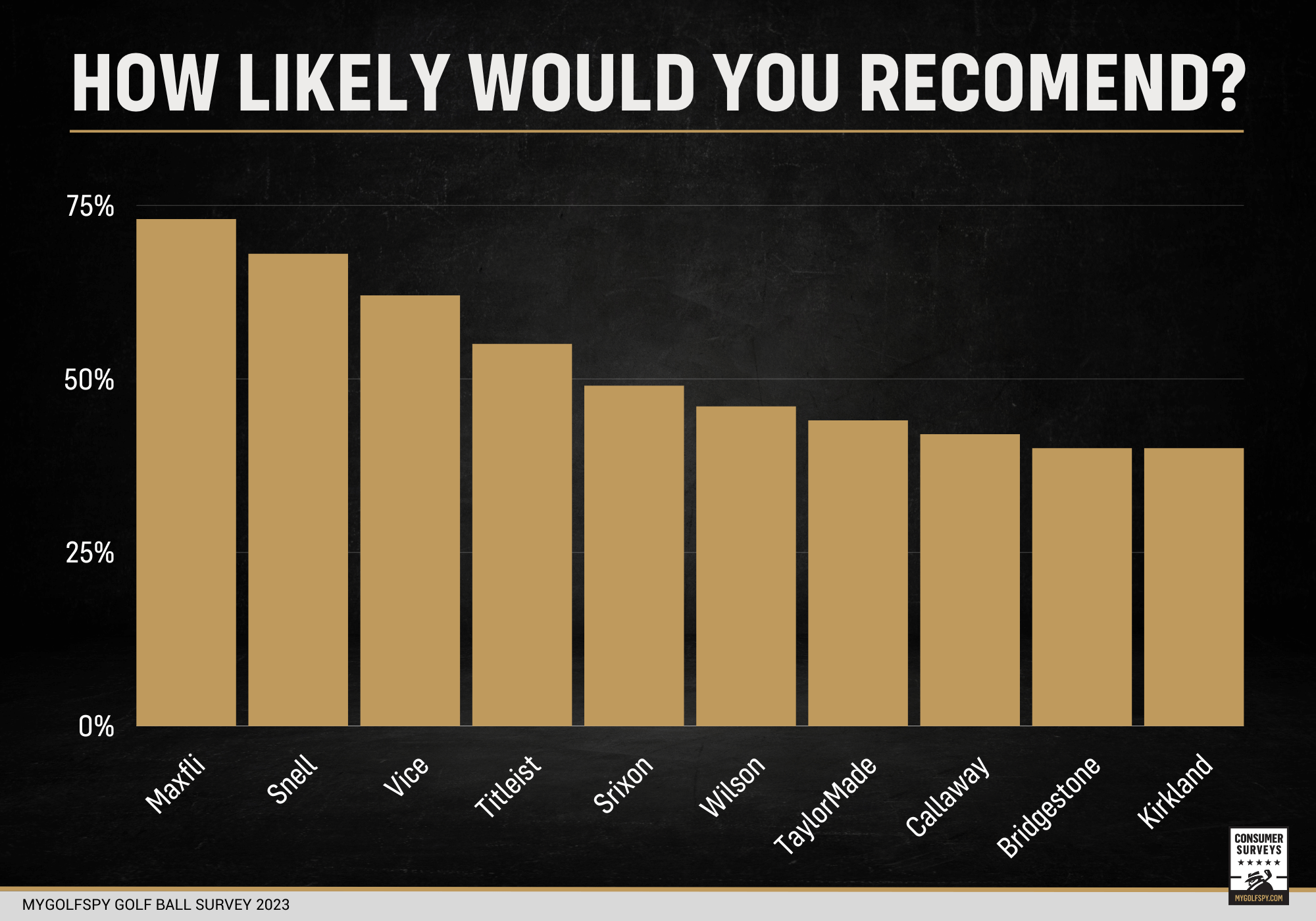Golfing News & Blog Articles
2023 Golf Ball Survey Results
About a month ago we asked you to take our golf ball survey. We wanted to get a better sense of what golf balls you’re playing and perhaps a bit about why you’re playing them. We also wanted to know where you’re buying your golf balls and whether “white, round and on the ground” remains the simple truth about what you’re playing.
In total, more than 7,700 of you (7,746, to be exact) took the survey.
We’ve chosen several of the more interesting questions and answers to share with you today.
Here’s what you told us.
Which type of golf ball do you typically play?

If nothing else, the responses served to validate what we already believed to be true. The overwhelming majority (nearly 83 percent) of our readers who took the survey play a golf ball with a urethane cover.
We’ll continue to mix in the occasional ionomer-covered preference product but our readers are, by and large, performance-driven, which is why urethane-covered balls will continue to be our focus.
How much do you typically pay for a dozen golf balls?

An intriguing result to say the least: $30-$40 was the most-selected price range yet many of the most popular balls (see below) exceed the $50 price point.
Even with bulk discounts, it’s hard to get below $40 for the industry leaders. For what it’s worth, most direct-to-consumer (DTC) brands can get you below $40 with bulk pricing.
As more manufacturers push retail price points above $50, it will be interesting to see if consumer buying habits follow.
Which of these golf ball brands have you played within the last year?

More than three-quarters of respondents report playing a Titleist ball within the last year. TaylorMade is next on the list but trails by more than 25 percentage points.
Srixon is third, ahead of Bridgestone by a couple of percentage points while VICE holds a comfortable lead among DTC brands. More than twice as many of you reported trying VICE than Snell, though Snell’s well-documented supply chain issues likely played a role in that.
Which of these brands makes your preferred golf ball model?

Titleist is again a healthy leader with nearly 40 percent of you listing the company as your preferred brand.
TaylorMade is second again while Srixon is a sneaky third edging out Callaway and Bridgestone.
Of note, DICK’S Sporting Goods house brand, Maxfli, edged out VICE to lead all DTC (or DTC-like) brands.
How likely is it that you would recommend your preferred golf ball to a friend or colleague?

Net Promoter Score is perhaps the ultimate metric for judging brand affinity and loyalty. It’s particularly interesting given that past surveys have taught us that smaller brands will typically fare better than larger ones.
It’s indicative of a smaller, but vocally passionate, following. Chances are, if you play a ball from a small or DTC golf brand, you love it.
Among all brands, Maxfli led the field with a Net Promoter Score of 73.
An exception of sorts, the Costco Kirkland brand was last among all brands that were chosen at least 100 times as the preferred golf ball brand.
Among golf’s traditional brands, Titleist was first with an NPS of 55. Srixon was again surprisingly strong (NPS 49) while TaylorMade, Callaway and Bridgestone weren’t far behind.
Rank the following golf ball performance characteristics by importance.

While the total rankings reveal a relative balance between Feel, Driver Distance, Iron/Approach Performance and Spin, feel was most often chosen as the most important characteristic.
Have I taught you nothing?
We’ll look to adjust the wording of answers in future surveys, but Feel should be, at best, third on this list.
What’s interesting in that result is that while Feel was selected first most often by a slim margin, it dropped off significantly from there. It was selected as the second most important factor only 16.6 percent of the time and third most important only 18.3 percent of the time.
The other three top choices were selected more than 20 percent of the time as the first, second and third most important characteristics.
My takeaway is that if you care about feel, you really care about Feel – and if you don’t, it’s really not that important (and it shouldn’t be).
Where do you buy the majority of your golf balls?

It never hurts to check in on buying habits now and again.
When it comes to golf balls, Big Box is king with one-third of you telling us that’s where you buy most of your golf balls.
Online from the manufacturer was the second most popular choice while smaller online specialty retailers account for more than 12 percent of the total.
Of note, Amazon was chosen only six percent of the time, while “green grass” was just a bit above seven percent.
What color golf ball do you play most often?

Finally, I wanted to see if trends in color and patterns were moving the needle with our readers.
While it’s inarguable that bright colors and things like Truvis, Pix and Triple Track have a following, white still accounts for nearly 78 percent of the balls played most often by our survey respondents.
I suppose it’s noteworthy that it wasn’t that long ago that non-white use was often said to be around 20 percent. The fact that it has reached 22 percent with our base of largely serious golfers suggests there could be some momentum, though I don’t anticipate anything overtaking white in my lifetime.
Have your say
Did anything stand out to you in the results? Let us know.
The post 2023 Golf Ball Survey Results appeared first on MyGolfSpy.


